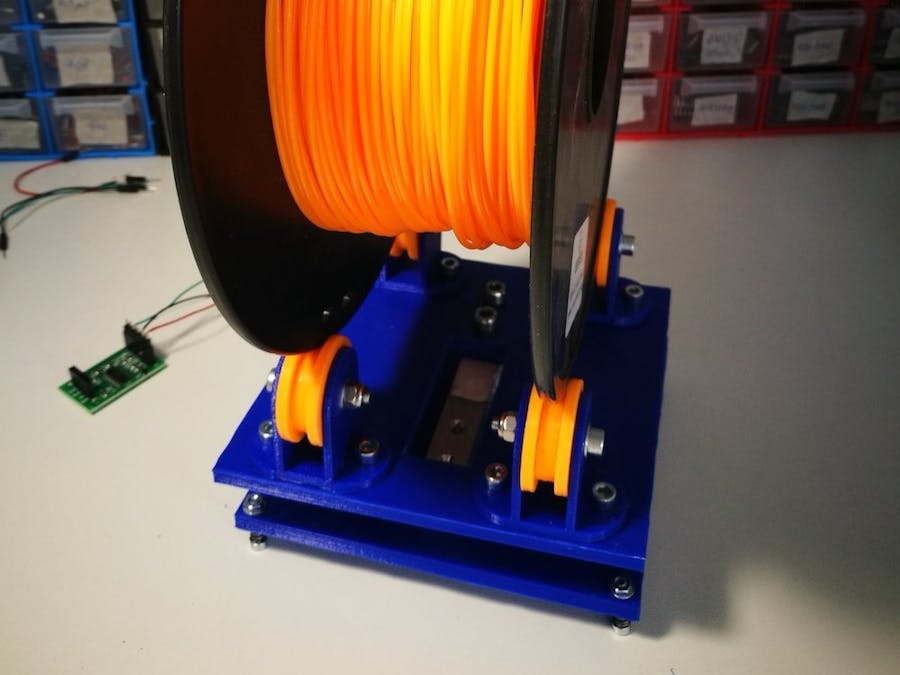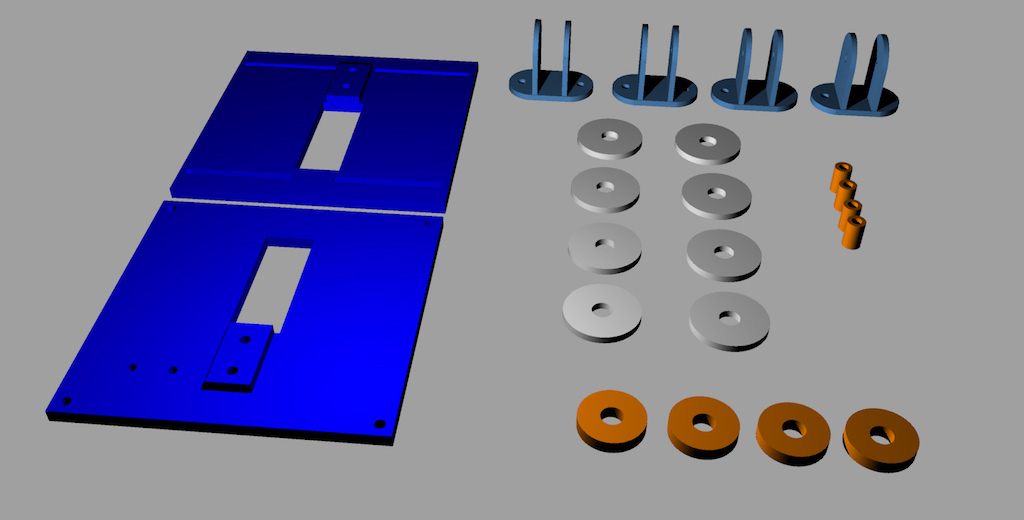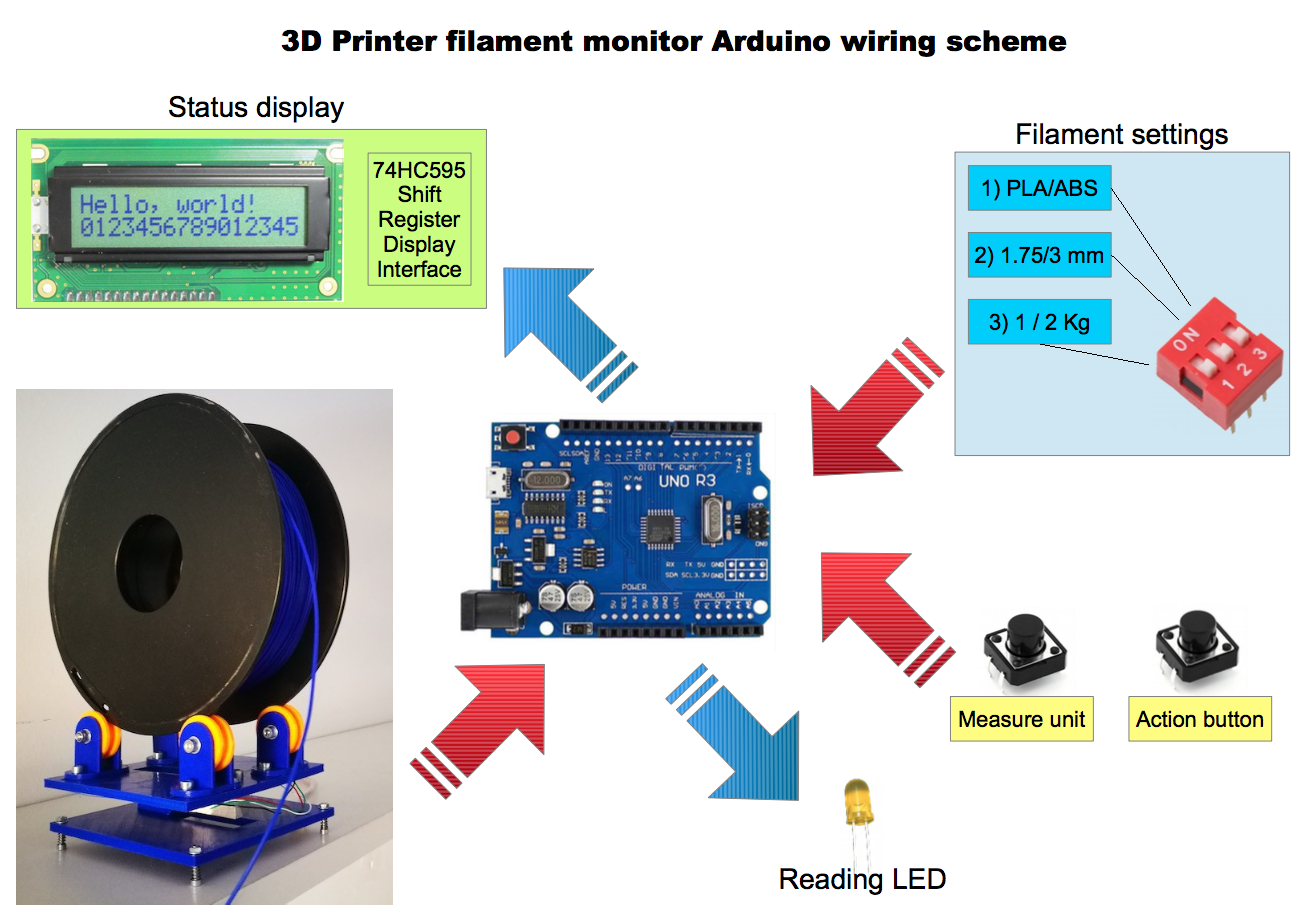This project aims to solve issues I have experienced working with 3D printers. The big issue is controlling the filament consumption while the 3D printer is working. After exploring several possible approaches I decided that the most reliable solution should be based on the weight control.
Find the kit on Tindie
The kit is on sale on Tindie.com market. Enjoy
Filament Weight3D printers filament is sold in weight; the most common packages are 1 or 2 Kg filament rolls. The reason is that the product format, the filament in our case, is the most important aspect for the end-user and meaningless for producers. Producers just sell kilograms of plastic material (PLA or ABS); the filament is the form factor provided on the market for a specific usage. I suppose that the same company that provides PLA filament will also provide the same material in other formats (e.g. plates, powder, pipes, film etc. for other applications). For a similar reason, 3D printer users needs to measure their filament in length. Slicer algorithms calculate the meter of filament needed for a certain 3D printed object, so it is important to know how many meters remain in the roll before starting a new object printing, and how many meters are used during a print job.
Filament DiameterWe know the specific weight of the materials used for 3D printing. PLA and ABS have different specific weights, and this is a constant value. We also know the filament diameter This means that 1 Kg 1.7 mm diameter filament will be longer than a 3 mm diameter filament of the same weight.
CalculateCalculating the conversion between weight and length it not so difficult knowing these parameters. You can just play with an algorithm with this nice online filament calculator.



_ztBMuBhMHo.jpg?auto=compress%2Cformat&w=48&h=48&fit=fill&bg=ffffff)









Comments
Please log in or sign up to comment.